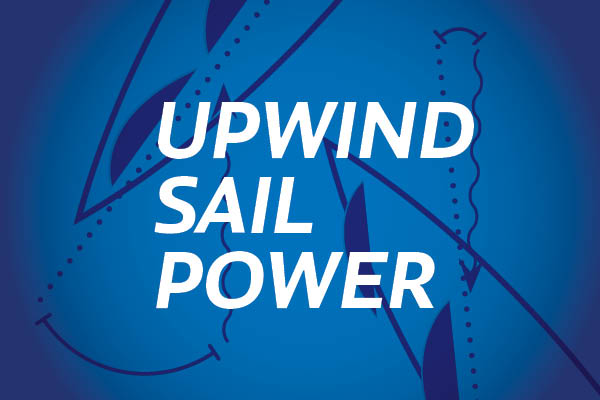UPWIND SAIL POWER
UPWIND SAIL POWER
by Bill Gladstone
Understanding and controlling sail power is essential to optimizing upwind performance.
The Three Sources of Sail Power
1. Angle of Attack
2. Sail Depth (Draft)
3. Sail Twist
Total sail power is the sum of power from the three sources. Sail trimmers first try to get the boat to full power (neither underpowered or overpowered), and then adjust the mix of power from angle of attack, depth and twist to match the sailing conditions and optimize performance. When overpowered or underpowered, we work to decrease or increase power.
Sailmakers design and build sails that are both fast and can be adjusted to perform well in a range of conditions. As sail trimmers, our goals parallel those of the sailmaker: First, achieve the designed shape and second, fine tune the shape to the conditions. We’ll look more at fine tuning sail shape after we define each of the three sources of sail power, as well as some other characteristics of sail shape.
1. Angle of Attack
The first source of power is angle of attack. At zero angle of attack, the sail is luffing. Trim in to increase angle of attack and thus, to increase power. Ease the sails out, and power is reduced. Angle of attack is also controlled by the driver. Bear off to increase power, and head up to reduce power.
Power increases as angle of attack increases, up to the point of a stall. When angle of attack is too great, flow stalls and power drops quickly.

Trimming in, as shown (A-B), increases angle of attack and power. The driver can also increase angle of attack and power by bearing off (C-D). Ease sails or head up to reduce power.
2. Sail Depth (Draft)
Sail depth, also called draft or camber, is the second source of sail power. Sail depth controls the power, acceleration, and drag of the sail. More depth creates more power and better acceleration; while a flatter sail has less power and less drag. As with angle of attack, power increases with depth up to the point where flow stalls. Maximum power is achieved just short of a stall.

A deep or “full” shape is more powerful than a flat shape. Deep sails are best for power and acceleration. A flat sail is best when overpowered in heavy air. A flat shape is also fast in smooth water, as it creates less drag.
A deep sail is best to punch through waves and chop, or to accelerate after tacking.
A flatter sail reduces power and also drag. In overpowering conditions a flat sail is best. A flat sail also will be fast in smooth water. When overpowered reducing drag can improve performance. In underpowered conditions adding power is more important than reducing drag (see fig. 2).
3. Sail Twist
Twist is the third source of sail power. Twist describes the relative trim of the sail high and low. A sail has lots of twist when the upper part of the sail is open. The opposite is a closed leech with little twist.
Increasing twist reduces power; decreasing twist adds power. Increasing twist spills power from the upper part of the sail. Again: More Twist = Less Power. (fig. 3). As with angle of attack and depth, reducing twist adds power up to the point where the sail stalls and power drops. So, why twist, and how much?
Wings and keels are not designed with twist, but sails (and propellers and windmill blades) are. Due to less surface friction, the wind is stronger aloft than at the surface; this is known as wind gradient. The true wind and boat speed together create the apparent wind. The stronger true wind up high creates a wider apparent wind angle (and stronger apparent wind) aloft. The upper part of the sail is twisted out relative to the lower part of the sail to match the more open apparent wind angle. The sailmaker designs twist into the sail to match the average wind gradient.
Sail twist is then fine-tuned to match the sail shape to the prevailing wind gradient. We further fine tune twist to wind and sea conditions, and to match our performance goals.
Fine tuning twist is one the most powerful trim adjustments we can make.

Twist is the difference in trim of the sail high and low. Increasing twist reduces power by spilling open the top of the sail.

Sails are designed with twist to match differences in apparent wind caused by wind gradient.



























